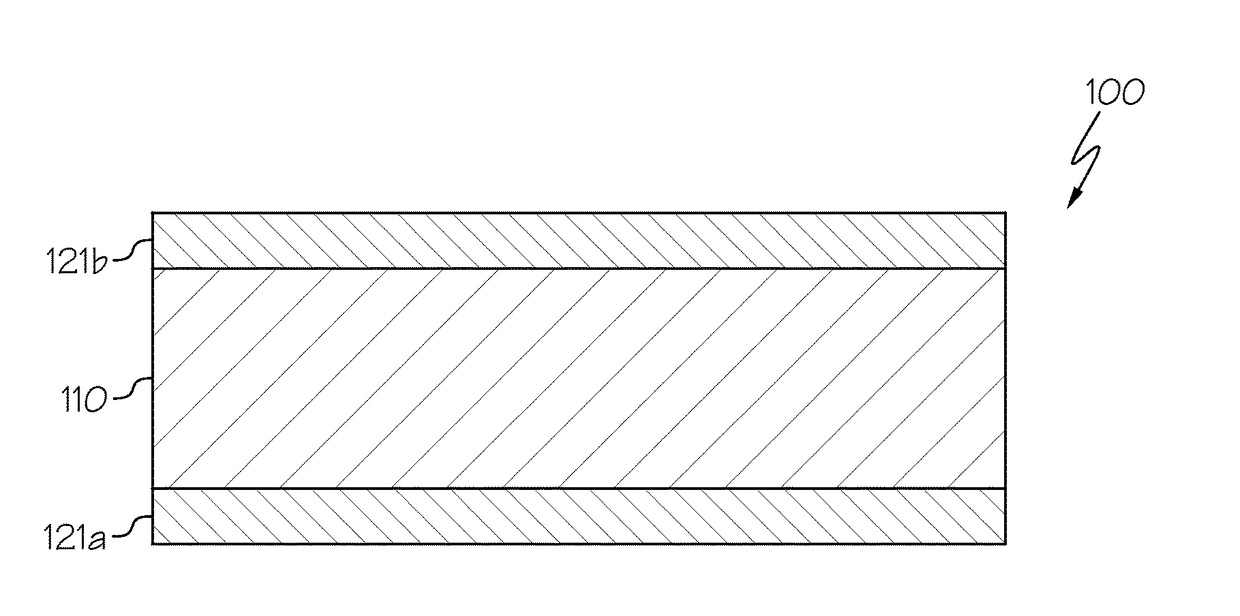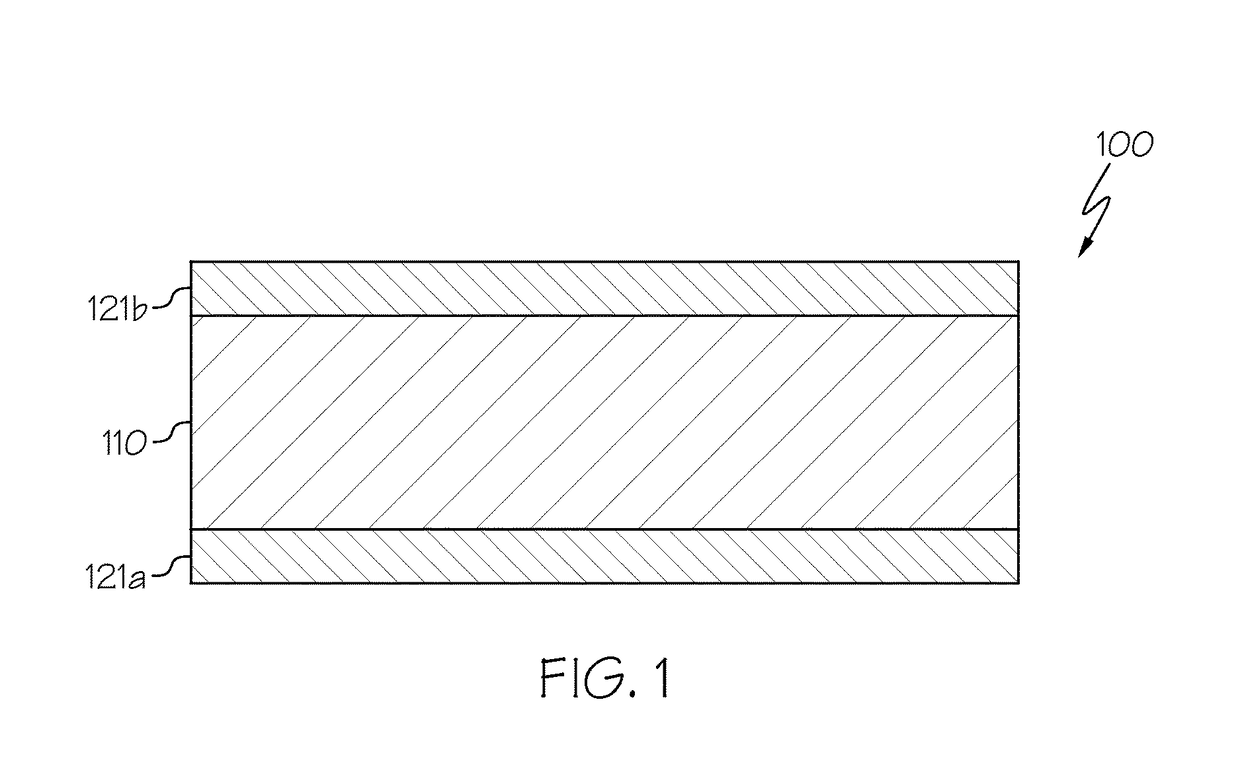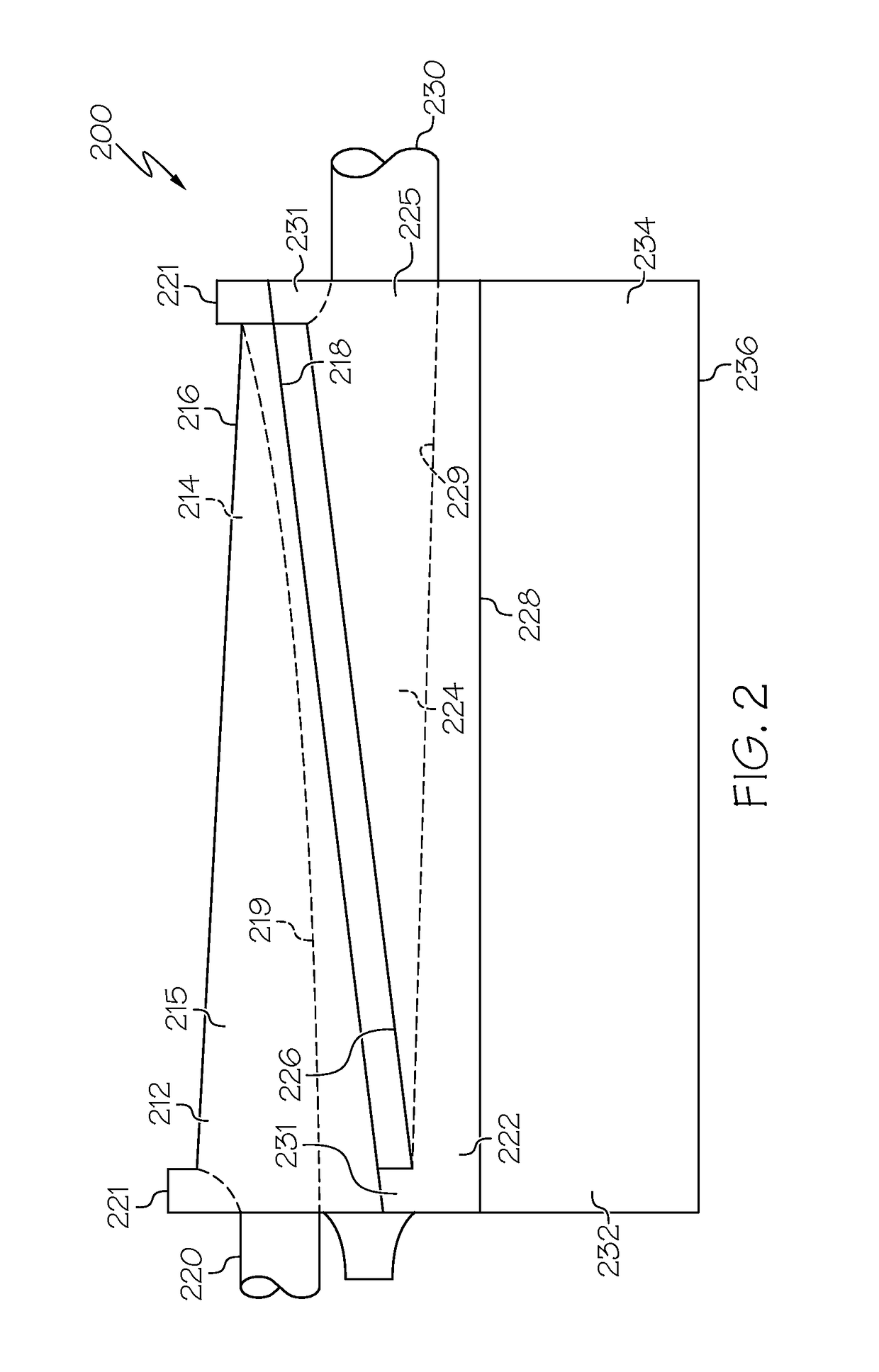Glass strengthening by ion exchange and lamination
a technology of ion exchange and lamination, applied in the field can solve the problems of cover glass breaking, frangibility problems of laminated glass articles,
- Summary
- Abstract
- Description
- Claims
- Application Information
AI Technical Summary
Benefits of technology
Problems solved by technology
Method used
Image
Examples
Embodiment Construction
[0015]Surface compressive stress and depth of the compressive stress layer (hereinafter referred to as depth of layer or DOL) are commonly used to characterize chemically strengthened glass. When calculating the stress profile, as measured by compressive stress over the DOL, it has previously been thought that the shape of the stress profile follows either a linear or a complimentary error function. However, engineering a laminated glass article as described herein enables the shape of the stress profile to be controlled and can result in a laminated glass article that has compressive stress extending deep into the article (e.g., having a large DOL).
[0016]Previously, to increase damage resistance of strengthened glass, two-step ion exchange processes were conducted, but two-step ion exchange processes generally involve complex combinations of ion-exchange bath concentration and temperature to avoid unwanted surface tension. Therefore, two-step ion exchange generally is difficult to ...
PUM
| Property | Measurement | Unit |
|---|---|---|
| compressive stress | aaaaa | aaaaa |
| compressive stress | aaaaa | aaaaa |
| thickness | aaaaa | aaaaa |
Abstract
Description
Claims
Application Information
 Login to View More
Login to View More - R&D
- Intellectual Property
- Life Sciences
- Materials
- Tech Scout
- Unparalleled Data Quality
- Higher Quality Content
- 60% Fewer Hallucinations
Browse by: Latest US Patents, China's latest patents, Technical Efficacy Thesaurus, Application Domain, Technology Topic, Popular Technical Reports.
© 2025 PatSnap. All rights reserved.Legal|Privacy policy|Modern Slavery Act Transparency Statement|Sitemap|About US| Contact US: help@patsnap.com



